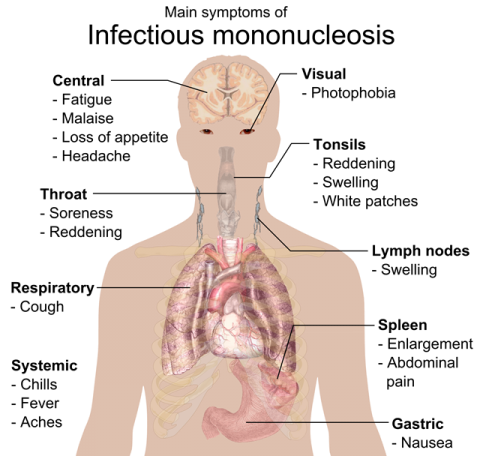Classic Papers
Suggested By Alastair Compston and alasdair coles
Magnetic resonance imaging of the brain has become an invaluable technique for the diagnosis and management of people with multiple sclerosis, as well as for research into its pathogenesis and treatment. This classic paper from Ian McDonald’s group is not the first study of multiple sclerosis using MRI, but it is, in our view, the first MRI study to bring new understanding of the pathogenesis of multiple sclerosis. In the study, the researchers scanned 10 multiple sclerosis patients (eight of whom were then experiencing a relapse) with the help of the paramagnetic agent, gadolinium DTPA, to determine whether the technique can distinguish between old and new lesions. For the first time, the dynamics of plaque formation could be studied and some of the controversies arising from static pathological studies resolved. For most contemporary readers, the big news was the revelation of the frequency of new lesions in people with apparently stable multiple sclerosis. For research, therefore, MRI could provide a sensitive measure of brain inflammation. Additionally, gadolinium-enhancing lesions could be used to reduce the duration and cohort sizes of clinical trials. Further work suggested that these lesions could be used as an outcome measure in clinical trials.
Suggested by Teruna J. Siahaan
This article describes the importance of alpha4-beta1 integrin on leukocyte infiltration through the blood-brain barrier (BBB). This finding was used as the basic principle to develop natalizumab (Tysabri®) for treating MS patients. Natalizumab blocks leukocyte adhesion to vascular endothelium of the BBB and prevents infiltration of leukocytes into the brain.
suggested by Gavin Giovannoni from his Multiple sclerosis Research blog
Posted: 15 Aug 2013 05:11 AM PDT

Suggested by May Han
Multiple sclerosis (MS) is an autoimmune demyelinating condition that mainly affects young adults worldwide. Despite the advances in MS research, the autoantigen(s) that causes this condition remains to be elucidated. Robinson et al. in their seminal 2003 Nature Medicine paper utilized the reverse proteomics approach of identifying complex autoantibodies from human and mouse (EAE) samples. They developed a protein array to identify autoantigens and validated these targets in the EAE model. This paper relays critical understanding related to MS pathogenesis at multiple levels; it utilizes cutting-edge technology and bioinformatics tools to identify disease signature(s) in MS with the aim of developing tolerizing therapy in autoimmune diseases including MS.
Suggested by Robyn Lucas
The truly classic studies of a role for EBV in the risk of multiple sclerosis are those from the U.S. military cohort, even though they are quite recent. With the large study sample and blood taken on multiple occasions, the studies have allowed a comprehensive examination of the timing of EBV infection and development of MS. Findings on a time window from infection to MS onset, of 100% conversion to seropositivity before MS onset in those who were initially seronegative, and increases in EBV antibody titers in late adolescence in those who would go on to develop MS compared to healthy controls, are fascinating and provide a strong contribution to progress in this field of study.
Suggested by May Han
Multiple sclerosis (MS) and neuromyelitis optica (NMO) are inflammatory demyelinating disorders that affect the central nervous system, and their clinical presentations are often difficult to differentiate. Identification of an autoantibody, NMO-IgG (anti-aquaporin 4, AQP4), has made a major step in diagnosing NMO. However, the issue still remains for NMO-IgG negative spectrum of disorders and MS cases that primarily affect the optic nerve and spinal cord. Work by Dr. Lucchinetti's group at the Mayo Clinic distinguishes the pathological features that clearly distinguish MS from NMO. Moreover, pathogenesis of NMO was elaborated by careful analysis of the postmortem NMO tissue. This article teaches us how much we can learn about complex disorders from analysis of the diseased tissue.
Suggested by philip de jager
This paper by the International MS Genetics Consortium (IMSGC) is an important milestone, as it reported the discovery of common genetic variants of modest effect that are associated with MS susceptibility using a whole genome scan approach. It therefore provided robust evidence that (1) susceptibility alleles of this type exist outside of the MHC and (2) a genome scan strategy was appropriate for discovering such variants. It has therefore been the foundation for subsequent studies by the IMSGC and other groups of investigators that have gradually elaborated the genetic architecture of MS susceptibility. The model that the genetic component of MS susceptibility results from the contribution of risk alleles in many different genes is now well accepted. This study also provided an important illustration of the power of consortia of investigators in successfully exploring challenging questions in MS.
Suggested by Robyn Lucas
The truly classic studies of a role for EBV in the risk of multiple sclerosis are those from the U.S. military cohort, even though they are quite recent. With the large study sample and blood taken on multiple occasions, the studies have allowed a comprehensive examination of the timing of EBV infection and development of MS. Findings on a time window from infection to MS onset, of 100% conversion to seropositivity before MS onset in those who were initially seronegative, and increases in EBV antibody titers in late adolescence in those who would go on to develop MS compared to healthy controls, are fascinating and provide a strong contribution to progress in this field of study.



suggested by George Ebers
This “tale of three cities” showed a clear geography to the disease within a single country, again cementing a north-south gradient in populations with very similar genetic origin. Jim McLeod had initiated and driven these studies years previously, which remain a fertile source of research within Australia.